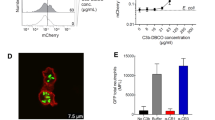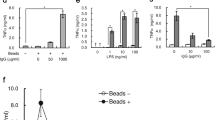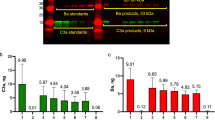Abstract
THE mechanism underlying chronic inflammation is of considerable medical importance both in temperate countries—where diseases such as rheumatoid arthritis are common—and in tropical countries—where various chronic inflammatory conditions cause much disease and disability. It is generally accepted that the macrophage is the central cell in chronic inflammation. We have drawn attention to the parallelism between the capacity of various agents to induce chronic inflammation in vivo and selective lysosomal enzyme secretion from cultures of macrophages1,2. The mechanism by which macrophage enzyme secretion is induced is unknown: we now report a mechanism mediated by cleavage products of the complement component C3.
This is a preview of subscription content, access via your institution
Access options
Subscribe to this journal
Receive 51 print issues and online access
$199.00 per year
only $3.90 per issue
Buy this article
- Purchase on Springer Link
- Instant access to full article PDF
Prices may be subject to local taxes which are calculated during checkout
Similar content being viewed by others
References
Allison, A. C., and Davies, P., in Mononuclear Phagocytes in Immunity, Infection and Pathology (edit. by van Furth, R.), 487–506 (Blackwell, Oxford, 1975).
Davies, P., and Allison, A. C., in The Immunobiology of the Macrophage (edit. by Nelson, D. S.) (Academic, London and New York, in the press).
Lay, W. H., and Nuzzenzweig, V., J. exp. Med., 128, 991–1009 (1968).
Huber, H., Polley, M. J., Luiscott, W. D., Fudenberg, H. H., and Müller-Eberhard, H. J., Science, 162, 1281–1283 (1968).
Da Silva, W. D., Eisele, J. W., and Lepow, I. H., J. exp. Med., 126, 1027–1048 (1967).
Goldstein, I. M., Hoffstein, S., Gallin, J., and Weissmann, G., Proc. natn. Acad. Sci. U.S.A., 70, 2916–2920 (1973).
Becker, E. L., Showell, H. J., Henson, P. M., and Hsu, L. S., J. Immun., 112, 2047–2054 (1974).
Davies, P., Page, R. C., and Allison, A. C., J. exp. Med., 139, 1262–1282 (1974).
Page, R. C., Davies, P., and Allison, A. C., Archs oral Biol., 18, 1481–1495 (1973).
Edwards, J. H., Wagner, J. C., and Seal, R. M. E., Clin. Allergy, 6, 79–88 (1976).
Bitter-Suermann, D., Hadding, U., Schorlemmer, H. U., Limbert, M., and Dukor, P., J. Immun., 115, 425–430 (1975).
Davies, P., Allison, A. C., Ackermann, J., Butterfield, A., and Williams, S., Nature, 251, 423–425 (1974).
Nicholson, A., Brade, V., Schorlemmer, H. U., Burger, R., Bitter-Suerman, D., and Hadding, U., J. Immun., 115, 1108–1113 (1975).
Conchie, J., Findlay, J., and Levvy, G. A., Biochem. J., 71, 318–325 (1959).
Bitter-Suermann, D., Hadding, U., Melchert, F., and Wellensiek, H. J., Immunochemistry, 7, 955–965 (1970).
Hadding, U., et al., J. Immun., 111, 286–287 (1973).
Author information
Authors and Affiliations
Rights and permissions
About this article
Cite this article
SCHORLEMMER, HU., DAVIES, P. & ALLISON, A. Ability of activated complement components to induce lysosomal enzyme release from macrophages. Nature 261, 48–49 (1976). https://doi.org/10.1038/261048a0
Received:
Accepted:
Issue Date:
DOI: https://doi.org/10.1038/261048a0
This article is cited by
-
Glycosidases in cancer and invasion
CANCER AND METASTASIS REVIEW (1985)
-
Synthesis of complement by macrophages and modulation of their functions through complement activation
Springer Seminars in Immunopathology (1983)
-
Receptors for complement components in inflammation
Agents and Actions (1983)
Comments
By submitting a comment you agree to abide by our Terms and Community Guidelines. If you find something abusive or that does not comply with our terms or guidelines please flag it as inappropriate.



